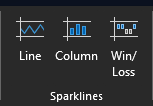One of the most powerful statements which has been said to me when expressing an improvement opportunity to a leader is “go ahead and try it; let me know how it goes.”
Until my first corporate role in 2015, my freedom to experiment with new ways of doing things was limited. However, I cannot help but question if these limitations were perceived by me or actual limitations placed on me by others. My thought is 80% of these were self-limitations I “sold” myself on, but some were explicit.
How it started for me
My first private corporate employer introduced me to the results of continuous improvement initiatives. Processes were dialed-in, work was low stress, and people enjoyed the work they did at the company. I started listening to the Gemba Academy Podcast in 2016 and my own experiments began. My motivation for executing my work improved and my attitude about work was positive, even when work was not going well.
After practicing continuous improvement and discussing lean for almost 7 years, I do not consider myself an expert. There are many areas I can use further development, and this occurs when experiments are done. However, the biggest breakthroughs in my lean and continuous improvement journey have been when I have experimented with the theories and tools to make improvements.
My recommendations for getting started
- Find a mentor or two: they will be your partner and sounding board as you start your journey.
- Fix what bugs you: this comes from the Paul Akers book 2 Second Lean. It is a simple thought process that helps you identify opportunities for improvement and taking ownership to improve them.
- Improve/do lean WITH people, not TO people: if your continuous improvement project, kaizen blitz, or lean initiatives involve others, involve them. Listen to their ideas and concerns and work with them to improve a cross-functional or team process.
- Practice for the people, NOT for the financials: it is true that companies which practice continuous improvement and have a lean culture (recommended reading: The Toyota Way by Jeffrey Liker) perform better financially. However, the people who execute the work are more important. Focus on making the work better for the people, and the financial improvements will occur as a result.
The truth is you cannot find the next best way of doing things without experimenting a bit. Sometimes, this means breaking the bounds if you lack explicit permission from others to do so. The only way to move forward in your lean journey is to take a step.

